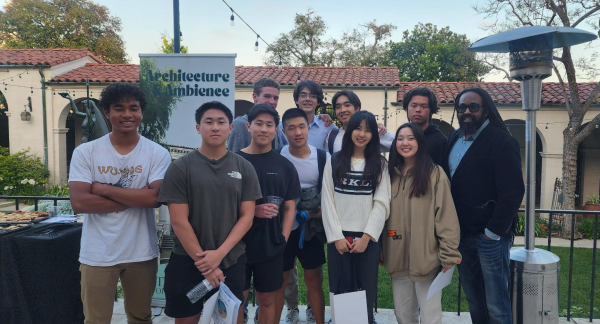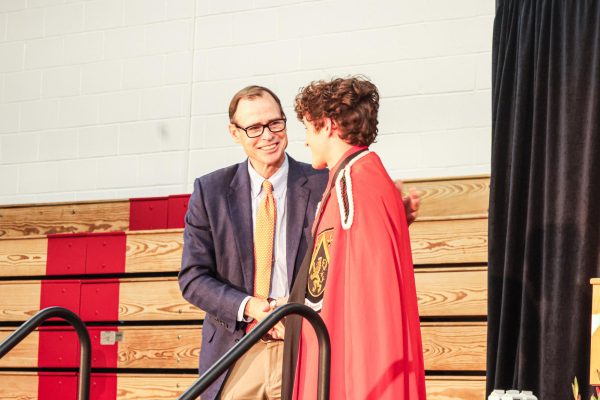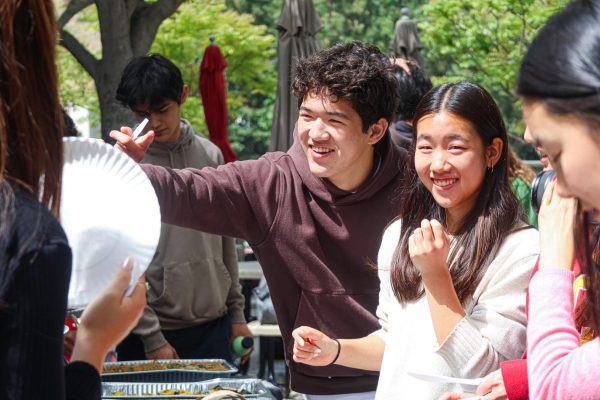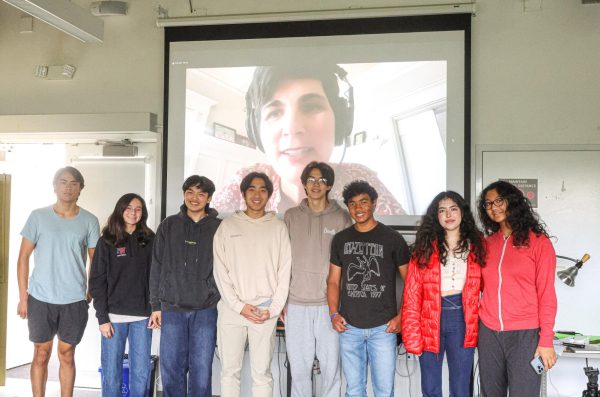School engages in ALICE protocol during drill
December 11, 2021
Following several school shooting threats throughout various Los Angeles high schools, students participated in an active shooter drill Dec. 10. Palisades Charter High School (PCHS), Santa Monica High School (Samohi), Buena Park High School, Hamilton High School and Hollywood High School were among dozens of schools across the country to experience copycat threats after the Nov. 30 shooting at Oxford High School in Michigan.
According to reports made to the school by parents and students, the events in early December raised new concerns about schools’ communication protocols for online threats. PCHS principal Pam Magee emailed families after online threats led hundreds of students to evacuate its campus Dec. 6. The email stated that one PCHS student posted their plans to commit an active shooting under the name of another student. The student later confessed to fabricating the threat.
March For Our Lives (MFOL) California Director and PCHS student Maya DeGanyar said she and other students in the Palisades MFOL chapter attempted to fill gaps in communication from the school regarding the threat and campus safety.
“We even made an announcement to the entire school on the loudspeaker,” DeGanyar said. “Our principal kind of just [said], ‘You guys can help in whatever way you can.’ There was zero communication going on from our administration.”
President Rick Commons said he believes if a similar event took place at the school, the administration would act quickly and send regular updates to students, parents, faculty and staff.
“I think if there were some kind of a threat made on social media, we would become aware of it very quickly,” Commons said. “I think that students, parents or community members who become aware of a social media situation will let us know right away, so I don’t fear that it would be out there and we wouldn’t know about it. Once we know about it, we’re going to immediately put together a team of people to evaluate whether there’s risk and if there’s risk, we’ll act conservatively in the interest of student safety.”
PCHS student and MFOL State Expansions Co-Director Madeline Glenn said most of the information students received about the threat was spread in group chats and on social media platforms. An email sent by Samohi’s administration to parents said the threat to their campus was posted on Snapchat, which the school discovered after being notified by a parent.
Glenn said she hopes schools will adapt to the increasing number of online shooting threats by consistently providing and publicly updating accurate information that is made available to students, parents and teachers.
“It’s really difficult to control social media and what students are saying online,” Glenn said. “Instead of working on punishing students who were posting [comments about threats] on social media or telling students they need to look harder for credible information, schools need to provide the true information in an accessible place so it is easy to understand and find, and they need to update it constantly.”
Amid the surge in shootings and online threats, Benjamin Ham ’23 said he appreciates the protection provided by school mental health and security resources.
“[The school] has so many resources when it comes to preventing an occurrence like [the school shooting] in Michigan from happening,” Ham said. “I know a big part of this situation is mental health and having the feeling of being included for the student, so for those kinds of resources, we have people like [Upper School Counselor Michelle Bracken] and [Head of Peer Support and Interdisciplinary Studies & Independent Research Teacher Tina McGraw ’01]. Even as a new ninth-grader and then going into Zoom school, I feel really welcome and safe at school with faculty and security, despite the news.”
Head of Security Jim Crawford said he believes constant communication between the security staff and the school community helps maintain campus safety.
“A good security [team] is [one] where our students and our faculty know our guards, know who they are and why we’re here—that’s important,” Crawford said. “I do think that we have probably one of the best securities when it comes to schools in the Los Angeles area. We want that relationship. We want you to be comfortable enough to come up to us and tell us when something is wrong.”
Crawford said Oxford High School uses Alert, Lockdown, Inform, Counter and Evacuate (ALICE) training to prepare students for a potential safety threat. ALICE training has also been facilitated for the school’s students, faculty and staff since 2009.
“ [Oxford High School] had just learned the same [ALICE] program that our school teaches our staff and our student community,” Crawford said. “They [completed the ALICE training] the week before that shooting happened. 1,800 kids were on that campus, and only five died. It is tragic, but it could have been a lot worse.”
According to an interview published in NPR with an ALICE Training Institute representative, roughly one quarter of U.S. school districts uses ALICE training. Despite its popularity, Aeganyar said this training can be harmful and that schools should focus on addressing mental health and other issues that lead to gun violence rather than simulating attacks.
“As MFOL representatives, we are very much against ALICE just because it is very intense,” Deanyar said. “We should be explaining [the source of gun violence] and including that in the curriculum instead of just having traumatizing drills where the lights are shut off. Students should not have to go through that. We should not be normalizing that.”
Associate Head of School Laura Ross said while the current drilling protocol can be emotionally difficult for students, it is intended to help students feel more secure on campus.
“There is a school of thought that the trauma of doing these drills can have an emotional aftermath,” Ross said. “I remember when I did ALICE training with my 10th grade Life Lab group. It was definitely emotional and scary, even as an adult. We want to help people through that scariness by having a plan to stick to.”
Glenn said she hopes schools will react to the recent increase in shootings and shooting threats by reforming their safety procedures and collaborating with students to meet their needs.
“I don’t think there has been an obvious successful working program at any school, anywhere in the United States,” Glenn said. “I think that public schools can lead the way in [making changes to active shooting defense training and protocol] because they’re more likely to be victims of this kind of violence, and it can be a lot harder to have the funding and have the ability to enforce certain things. I’m so glad that despite my school’s struggles and maybe not having the ideal curriculum for teaching students about gun violence or preventing school shootings, they are now listening to us and working with us. Things are starting to get on the right track.”









































